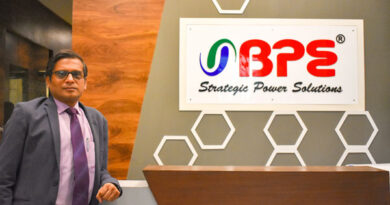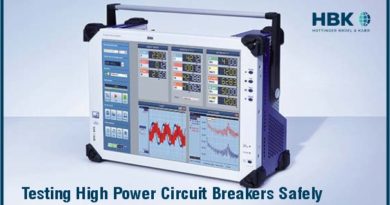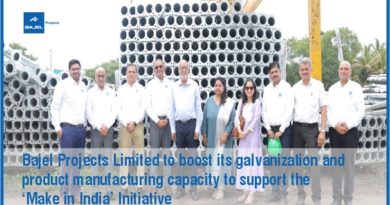An Exclusive Interface with (Mr. Bhupinder Singh) CEO of “Messe Munchen India”

Powering India’s Electronics & Semiconductor Growth
India’s electronics and semiconductor industry stands at an inflection point. Backed by rising domestic demand, ambitious production-linked incentive (PLI) schemes and global supply chains realigning towards India, the country is emerging as a key hub for manufacturing, design and innovation.
At the heart of this transformation are electronica India and productronica India—platforms that connect the entire electronics value chain, from semiconductors and components to production, assembly and testing.
In this exclusive conversation, Bhupinder Singh, President IMEA (India, Middle East, Africa), Messe München CEO, Messe Muenchen India, shares insights on the upcoming edition, the role of the India Semiconductor Conclave, and how these trade fairs act as accelerators for India’s ambition to become a global electronics powerhouse.
- India’s electronics industry is on a growth trajectory. What market potential and opportunities do you see, and how do electronica India and productronica India contribute to this growth?
India’s electronics sector is expanding at an unprecedented pace. Mobile devices, IT hardware, consumer and automotive electronics, industrial applications, and renewable energy systems are driving growth, while the EV ecosystem and IoT-led innovation are opening entirely new horizons.
Opportunities span across semiconductor fabs, component localisation, advanced packaging, display technology, battery management, EV infrastructure and smart factories. At the same time, the Electronics Components Manufacturing Scheme (ECMS) is boosting passive component manufacturing—a critical step in creating a resilient, end-to-end domestic supply chain.
The government’s PLI schemes, the India Semiconductor Mission, and display manufacturing incentives are fuelling investment in consumer and automotive electronics (EV and ADAS), renewable energy, and telecom (5G and beyond). Simultaneously, Industry 4.0 adoption, AI integration and sustainability are redefining Indian manufacturing. Equally vital is nurturing startups and deep-tech ventures, whose agility and innovation accelerate India’s journey to self-reliance.
At Messe Muenchen India, our platforms have evolved from niche component shows into comprehensive ecosystems that represent the entire electronics and semiconductor value chain. electronica India and productronica India not only showcase cutting-edge technologies but also enable partnerships, unlock investments, and integrate India more deeply into global supply chains.
- Over the years, knowledge platforms like Embedded NEXT Arena, e-Future, e-Mobility, India PCB Tech, and Smart Factory Revolution have been introduced. How do they benefit exhibitors and visitors?
Our knowledge platforms are designed to address focused industry needs:
Embedded NEXT Arena connects the embedded community with IoT, automation, and consumer electronics leaders.
e-Future Conference explores frontier technologies like AI, edge computing, and quantum electronics.
e-Mobility Conference spans the full EV spectrum—semiconductors, power electronics, charging infrastructure, and battery systems.
India PCB Tech Conference strengthens the foundation of electronics manufacturing by uniting policymakers and innovators in the PCB domain.
CEO Forum enables high-level strategic dialogue and investment discussions in the ESDM sector.
Conference on Smart Factory Revolution: Driving Electronics Manufacturing with Industrial Automation which is focused on ‘Unlocking the Power of Industry 4.0, Robotics, and Connected Systems for Next-Gen Electronics Production.’
Podcast Series where leaders discuss current and upcoming trends as well as provide concrete insights to for all industry stakeholders.
Through these curated forums, every stakeholder—be it an MSME, startup, or multinational—finds the right opportunities to connect, learn and grow.
- The ESDM sector is evolving rapidly amid global shifts. How do you ensure the trade fairs remain relevant and impactful each year?
Innovation cycles are shrinking, and supply chains are being reshaped by geopolitics. To stay relevant, our strategy rests on three pillars: constant market intelligence, stakeholder engagement and proactive curation.
We work closely with policymakers, industry leaders, startups and academia to identify emerging priorities—supply chain resilience, design-led manufacturing, AI adoption and sustainability. These insights shape our exhibitions, pavilions, and conferences.
Looking ahead, we are introducing a strategic shift: from 2026, electronica India and productronica India will be hosted annually in both North and South India. This dual-edition approach will deepen engagement, ensure faster access to technologies and enhance nationwide supply-chain resilience—reflecting the scale of India’s fast-growing electronics industry.
Our role is not just to mirror market shifts but to actively shape the ecosystem by fostering collaborations that lead to tangible outcomes.
- How does the India Semiconductor Conclave at electronica India and productronica India strengthen the ecosystem?
The India Semiconductor Conclave addresses the most critical gap in India’s electronics value chain—the need for a robust domestic semiconductor ecosystem.
By bringing together chipmakers, fabless design firms, equipment suppliers, policymakers, and OEMs, the Conclave fosters synergies across downstream sectors like automotive, consumer electronics, telecom and renewable energy. It drives technology transfer, investment and R&D collaboration, aligning government vision with industry execution and positioning India as a credible global contender.
- This year’s edition is expected to be the largest ever. Could you elaborate on the scale and its significance?
This year marks a milestone. Over 3 days of sourcing, networking and partnerships, we anticipate 55,000+ visitors interacting with 6000+ global brands and 5 country pavilions across 60,000+ sqm. of space along with 2,000+ structured buyer-seller meetings. 6 concurrent conferences and 30+ knowledge sessions will host 200+ speakers. Overall, participants will access insights across the entire electronics and semiconductor spectrum and connect to professionals from 50+ participating countries.
The scale reflects the confidence that global and domestic players have in India’s electronics growth story. It shows that the world is not just watching India—it is actively investing in its rise as a global hub.
- Why should industry professionals and decision-makers not miss electronica India and productronica India?
Because these trade fairs are more than exhibitions—they are growth accelerators.
They have evolved into India’s largest integrated platforms for electronic components, systems, applications, and production technologies. Here, the entire value chain—from chip design and component sourcing to production equipment and testing solutions—converges under one roof.
Government officials, global OEMs, MSMEs, startups, and investors come together to exchange knowledge, forge partnerships, and translate policy intent into business outcomes. Several MSMEs have secured multi-year supply contracts directly from our show floor, underscoring the tangible value these events deliver.
Moreover, we champion local suppliers by connecting them with international buyers, strengthening India’s global competitiveness.
Simply put, if you are part of the electronics, semiconductor, or manufacturing ecosystem, electronica India and productronica India are the definitive platforms to connect, collaborate, and create the future.



